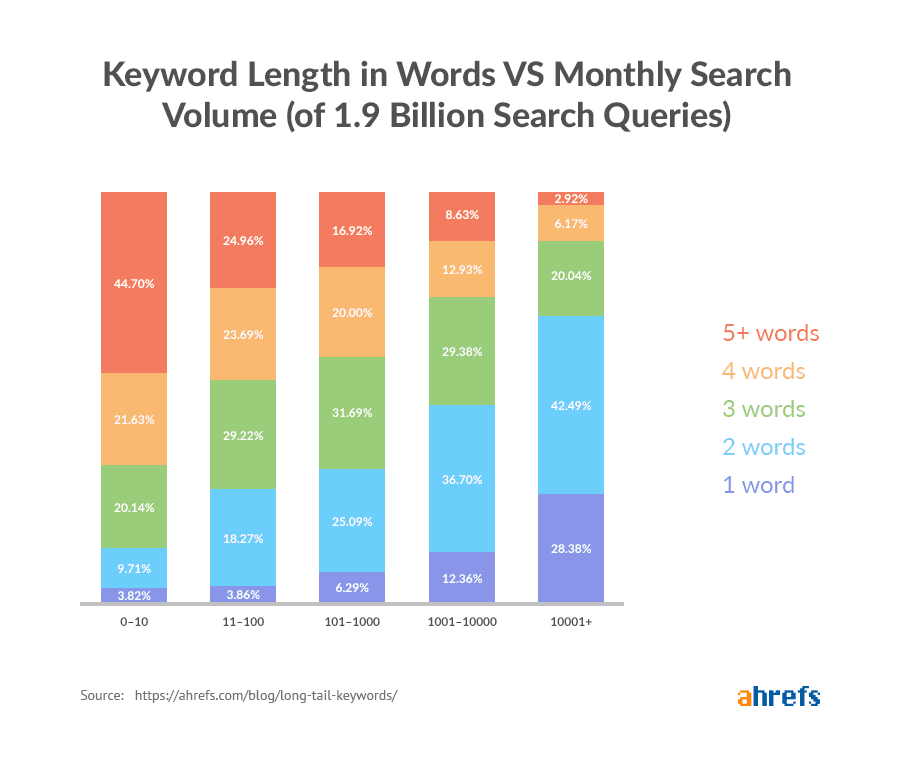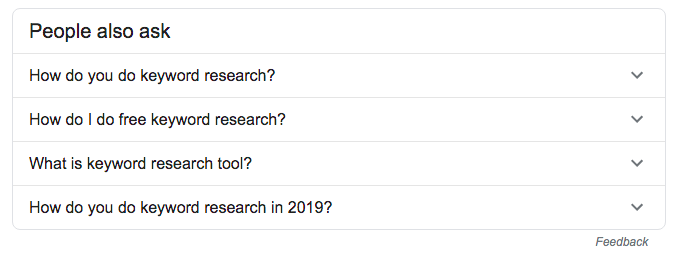Sending your data to our servers, please wait...





Oops... No results found.
Please try a different search phrase.
SEO 7 min read
Long vs. Short Tail Keywords: A Comprehensive Guide
Written by Ayesha Renyard
Content Writer @ Galactic Fed
Expert reviewed by Dallin Porter
Marketing Director @ Galactic Fed
Published 22 Sep 2020
SEO best practices are constantly evolving, and keyword research is no exception. Just when you thought peppering your website with popular terms would skyrocket your SEO, you hear that it’s no longer enough to drive organic traffic to your website. Great.
But if you’re reading this article, it means that you still embrace the glory that is SEO marketing (one of us! one of us!) and want to get into the nitty gritty of keyword research—to knock your next campaign out of this galaxy.
So let’s get started.
As part of our SEO series, this article covers:
- SEO keywords and keyword research
- Short vs. long tail keywords
- Keyword difficulty and competition
- Google’s latest search engine update
- Optimizing long tail keywords in 2020
Buckle up, because we’re ready for take off.
Quick Refresher: What are SEO Keywords and Keyword Research?
SEO keywords range from single words to complex phrases and are used to inform website content—to increase relevant, organic search traffic. When effectively researched and optimized, keywords act as a conduit to connect your target audience with your website.
Keyword research is the process of finding and analyzing actual search terms that people enter into search engines. The goal of keyword research is to identify search terms that your site can and should rank for in Google Search. These insights can help inform your content strategy, as well as your larger marketing strategy.
Need more information on keyword research before diving into our discussion on short and long tail keywords? Check out our Definitive Guide.
Short vs. Long Tail Keywords
Short tail keywords—also known as head terms, broad keywords, or focus keywords— are search queries that are made up of no more than three words, and refer to very broad topics. This inherently makes them popular, high-volume search terms. For most websites; however, short tail keywords are simply not enough to stand out against the Amazons of the world, which monopolize the top-ranking SERP spots.
Long tail keywords are quite the opposite. They are made up of three or more words, are highly focused, and target specific audiences. The graph below (which analyzes roughly 1.9 billion keywords in Ahref’s US database) demonstrates why they are called long tail keywords (hint: it has to do with the looong tail of low volume searches). As you can see, there are millions of queries that are searched less than 10 times. Although long tail keywords wind up in less searches, there are ways to use their “unpopularity” to your advantage.


The use of long tail keywords may be a bit counterintuitive to an SEO beginner; however, when it comes to keyword difficulty and competition—important metrics for SERP ranking—they have quite an edge on short tail keywords.
- Keyword difficulty: Using Ahrefs Free Keyword Difficulty Checker, you can evaluate how hard it is to be among the top ten ranking webpages for a particular keyword. Keyword difficulty is measured on a scale from 0-100. If the keyword ranks below 30, we say go for it! However, between 31-70, gaining organic traffic will be pretty hard. If it ranks over 71… it really isn’t worth your time. On the bright side, the low volume of long tail keyword searches works to your advantage here—it is much easier to score a higher ranking and gain visibility.
- Keyword competition: With a keyword research tool, you can also determine how many advertisers are bidding on ads in the search results of a given keyword. Again, the more popular a keyword is, the higher the keyword competition is (and the more expensive it will be to bid on an ad). To optimize your marketing dollars, long tail keywords are probably the better route to take. With less people bidding on these keywords, you’ll snag a higher ranking spot for less money.
Google’s 2019 Search Engine Update
In 2019, Google announced the largest update to its search system in five years: BERT. BERT, which stands for Bidirectional Encoder Representations from Transformers, is Google’s neural network-based technique for natural language processing (NLP) pre-training.
Huh? In plain language, BERT helps Google understand the nuances and contexts of searches, and better match those queries with more relevant results. As voice searches become more prevalent, it is important for search engines to consider linking words, such as “to” and “for”—to determine the true intent of the user’s query and drive relevant results. According to Google, the update impacts 10% of all search queries.
Optimizing Long Tail Keywords in 2020: How-To
Some people believe that SEO keywords are seeing a “soft death” due to these search engine updates, but we disagree. They simply encourage what successful SEO has always done, which is tailoring content to a human audience, not a computer. And with long tail keywords, you’re doing just that. Who knows? These updates may create a surge in long tail keyword volume—as they better reflect what users actually search.
So in 2020 and beyond, take the time to get to know your target audience and what they are searching. Keyword research tools help you find thousands of long tail keywords in a matter of seconds. Not in the budget? No problem. Google Search does a lot of the heavy lifting for you.
Take a broad topic and begin typing it into Google. We used “keyword research.” You will then see Google autocomplete suggestions, like so:

Once you complete the search, the “People also ask” section is another resource for gaining insights on what your target audience may be searching for:

Or, scroll down to the bottom, to see the “Searches related to” section:

These results are more specific/less popular searches related to the overall topic for which you’re searching. Who would have thought? All of these long tail keywords right under your nose!
This year, as part of your keyword research, take the time to get to know your audience. Once you crack that code, you will be well on your way to high-converting organic traffic with long tail keywords that count!
Finally, it’s cool to be unpopular.
Brush up on all things SEO, from Link Building to Keyword Research, in our Galactic Fed SEO Series.

Ayesha Renyard
Content Writer @ Galactic Fed



